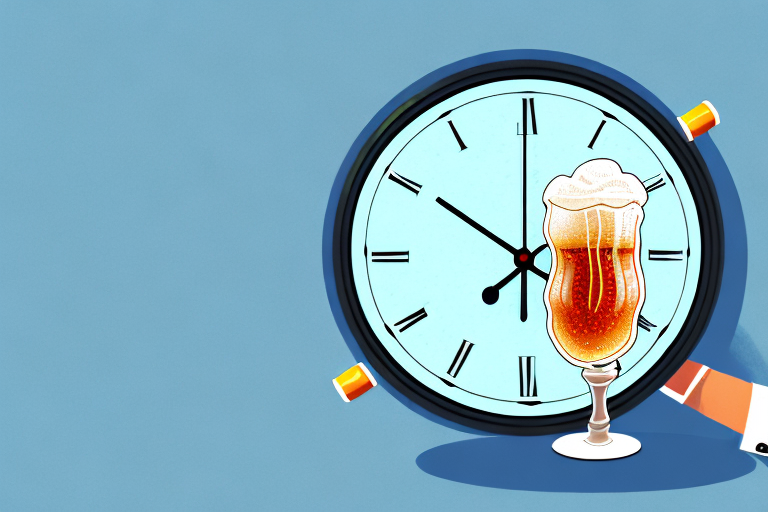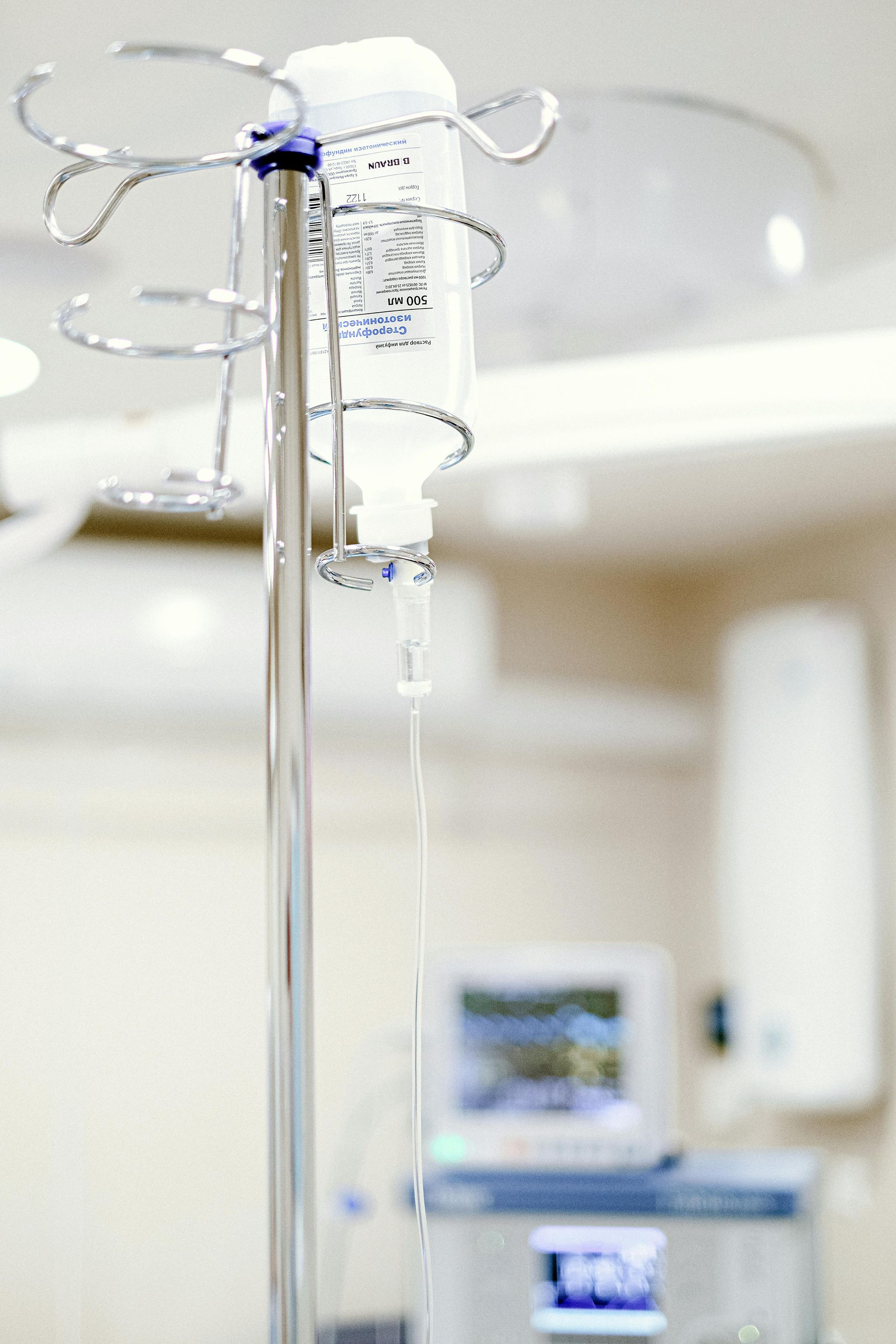How Long Does It Take for Alcohol to Wear Off Safely and Fully

Medically reviewed by Micaela Strevay, FNP-C, PMHNP-BC
Table of Contents

Alcohol consumption is a common social activity that can be enjoyed responsibly in moderation. However, even in moderate amounts, alcohol can impair cognitive, physical, and emotional functions, and the effects of alcohol can last for hours after consumption. If you're wondering how long it takes for alcohol to wear off, the answer is not straightforward. Alcohol metabolism varies from person to person, and factors such as gender, age, weight, and overall health can affect how long it takes for alcohol to leave your system.
Understanding Alcohol Metabolism
Before we dive into the factors that affect alcohol metabolism, let's explore how your body processes alcohol.
Alcohol is a psychoactive substance that affects the central nervous system, leading to feelings of relaxation and euphoria. When you consume alcohol, it enters your bloodstream and travels to various organs in your body, including your liver. Your liver has enzymes that break down alcohol into acetaldehyde, which is then broken down into harmless substances that your body can eliminate.
The majority of alcohol is metabolized through this process, while a small amount (roughly 10%) is eliminated through sweat, breath, and urine.
Factors Affecting Alcohol Metabolism
The rate at which your body metabolizes alcohol is influenced by several factors that vary from person to person. These factors include:
- Gender: Women tend to metabolize alcohol slower than men due to differences in body composition and enzyme production.
- Age: As you age, your liver's ability to produce enzymes that break down alcohol decreases, leading to slower metabolism.
- Weight: Heavier individuals tend to metabolize alcohol faster than lighter individuals due to a higher volume of body water that can dilute the alcohol.
- Genetics: Certain genetic variations can affect the production of enzymes that break down alcohol, leading to faster or slower metabolism.
- Overall Health: Chronic liver disease or other health conditions can impair the liver's ability to metabolize alcohol, leading to slower metabolism.
The Role of the Liver in Alcohol Metabolism
Your liver plays a crucial role in alcohol metabolism. It is responsible for producing enzymes that break down alcohol into acetaldehyde and then into substances that your body excretes.
The speed at which your liver produces these enzymes can vary based on a range of factors such as genetics, age, and overall liver health. Additionally, the amount of alcohol you consume can overwhelm the liver's ability to produce enzymes, leading to a buildup of acetaldehyde in the bloodstream and unpleasant side effects such as nausea and vomiting.
It's important to remember that alcohol metabolism is a complex process that can be influenced by a variety of factors. By understanding how your body processes alcohol, you can make informed decisions about your drinking habits and stay safe while enjoying alcohol in moderation.
Blood Alcohol Concentration (BAC)
Blood Alcohol Concentration (BAC) is the amount of alcohol present in your bloodstream, expressed as a percentage. The percentage indicates the proportion of alcohol in your blood relative to the total volume of blood.
When you consume alcohol, it enters your bloodstream through your stomach and small intestine. From there, it travels to your liver, where it's broken down and eventually eliminated from your body. However, your liver can only process a certain amount of alcohol per hour, so if you drink more alcohol than your liver can process, your BAC will continue to rise.
How BAC is Measured
BAC can be measured using a breathalyzer, blood test, or urine test. Breathalyzers measure the amount of alcohol in your breath and convert it to an estimate of your BAC. Blood and urine tests are more accurate but are often only administered in situations where the legal limit for BAC is in question.
It's important to note that BAC can be affected by a variety of factors, including your weight, gender, and how quickly you consumed alcohol. For example, if you're a smaller person, you may reach a higher BAC more quickly than a larger person who consumed the same amount of alcohol.
Legal BAC Limits for Driving
The legal limit for BAC while driving varies by jurisdiction. In most states in the US, the legal BAC limit is 0.08%, while in other countries, it may be lower or higher. It's essential to know your local laws and to avoid driving if you've consumed alcohol.
Even if your BAC is below the legal limit, you may still be impaired and at risk of causing an accident. It's always best to err on the side of caution and find a sober ride home if you've been drinking.
Factors Influencing Alcohol Absorption
Alcohol consumption is a common social activity that can have varying effects on the body. The rate at which alcohol is absorbed into your bloodstream can vary based on several factors, including:
Age and Gender
Age and gender can affect the rate at which alcohol is absorbed. Women tend to have a higher blood alcohol concentration (BAC) than men after consuming the same amount of alcohol due to differences in body composition. This is because women generally have a higher percentage of body fat and a lower percentage of water in their bodies than men.
Additionally, alcohol is metabolized less efficiently as we age, which means older people may feel the effects of alcohol for longer.
It is important to note that the legal limit for BAC varies by country and state. In the United States, the legal limit is 0.08%, while in other countries it may be lower or higher.
Body Weight and Composition
Your weight and body fat percentage can also affect how quickly alcohol is absorbed. People with higher body fat tend to have a higher BAC after consuming the same amount of alcohol as those with lower body fat. This is because alcohol is not water-soluble, meaning it is absorbed into fatty tissue more readily than into lean tissue. Therefore, a person with a higher percentage of body fat will have a higher concentration of alcohol in their bloodstream than a person with a lower percentage of body fat.
Food Consumption
Eating food before or while drinking can slow the absorption of alcohol into your bloodstream. Food in your stomach slows the passage of alcohol through the stomach and into the small intestine, where it is absorbed into the bloodstream. This means that if you eat a meal before or while drinking, you will likely feel the effects of alcohol more slowly than if you drink on an empty stomach.
It is important to note that while food can slow the absorption of alcohol, it does not prevent it. Drinking too much alcohol, even with food in your stomach, can still lead to dangerous levels of intoxication.
Medications and Health Conditions
Some medications and health conditions can affect how quickly alcohol is absorbed into your bloodstream. Medications that slow the central nervous system, such as sedatives and tranquilizers, can increase the effects of alcohol. This is because both alcohol and these medications depress the central nervous system, leading to an increased risk of respiratory depression and other dangerous side effects.
Health conditions such as liver disease and diabetes can also slow the rate at which alcohol is metabolized. The liver is responsible for breaking down alcohol in the body, and if it is not functioning properly, alcohol can accumulate in the bloodstream, leading to a higher BAC and increased risk of alcohol-related harm.
It is important to talk to your healthcare provider about any medications or health conditions you have before consuming alcohol to ensure that it is safe for you to do so.
Alcohol Elimination Rate
Once alcohol is in your bloodstream, your body will eliminate it over time. The process of alcohol elimination is complex and can vary based on several factors.
Average Elimination Rate
The average rate at which alcohol is eliminated is between 0.015 and 0.017% BAC per hour. This means that if your blood alcohol concentration (BAC) is 0.08%, it would take approximately 5-6 hours for your body to completely eliminate the alcohol. However, this rate can vary based on several factors, including age, sex, weight, and liver health.
For example, younger individuals tend to eliminate alcohol at a faster rate than older individuals. This is because the liver, which is responsible for breaking down alcohol, tends to function more efficiently in younger individuals. Similarly, men tend to eliminate alcohol at a faster rate than women due to differences in body composition and enzyme activity.
Variations in Elimination Rate
The rate at which your body eliminates alcohol can vary depending on several factors, such as the amount of alcohol consumed, the frequency of alcohol consumption, and overall health status. If you consume a large amount of alcohol in a short period of time, your body may not be able to eliminate it as quickly as it is absorbed, leading to a higher BAC and increased risk of alcohol-related harm.
Additionally, frequent alcohol consumption can lead to changes in the liver and other organs involved in alcohol metabolism, which can affect the rate at which alcohol is eliminated. Certain health conditions, such as liver disease, can also impact the body's ability to eliminate alcohol.
It's important to note that while alcohol may be eliminated from the bloodstream, it can still have lingering effects on the body. For example, alcohol can impair cognitive and motor function even after it has been eliminated from the bloodstream. It's always important to drink responsibly and never drink and drive.
Signs That Alcohol Has Worn Off
Alcohol is a widely consumed substance that can have a range of effects on the body. Some people drink alcohol to relax, while others use it to socialize or celebrate. However, it is important to understand the signs that alcohol has worn off to avoid any negative consequences.
Physical Signs
Physical signs that alcohol has worn off may include decreased body temperature, increased heart rate, and improved balance and coordination. These changes occur because alcohol is a depressant that slows down the body's functions, and as it wears off, the body returns to its normal state.
However, it is important to note that if you have consumed a large amount of alcohol, the physical signs of intoxication may persist even after the alcohol has worn off. This is because alcohol can stay in your system for several hours, and it can take time for your body to fully process it.
Cognitive and Emotional Signs
Cognitive and emotional signs that alcohol has worn off may include improved memory, increased alertness and concentration, and decreased irritability and anxiety. These changes occur because alcohol can impair cognitive and emotional functioning, and as it wears off, these functions return to their normal state.
It is important to note that if you have consumed a large amount of alcohol, the cognitive and emotional signs of intoxication may persist even after the alcohol has worn off. This is because alcohol can affect the brain for several hours, and it can take time for your brain to fully recover.
Furthermore, it is important to be aware of the potential negative consequences of alcohol consumption, such as impaired judgment, risky behavior, and alcohol poisoning. It is always important to drink responsibly and in moderation, and to seek help if you or someone you know is struggling with alcohol addiction.
Tips for Sobering Up Safely
Hydration and Nutrition
Drinking water and consuming food can help reduce the effects of alcohol and may help eliminate alcohol more quickly.
Rest and Sleep
Resting and sleeping can help your body eliminate alcohol more quickly. Sleep is particularly important as your liver works hardest to metabolize alcohol while you sleep.
Time: The Only True Sobering Method
The only way to fully sober up after drinking alcohol is to wait until it has been completely eliminated from your body. While there are strategies for minimizing the effects of alcohol, the only true sobering method is time.
Risks of Drinking Excessively
Drinking alcohol can be a fun and social activity, but it is important to be aware of the risks associated with excessive drinking. Excessive drinking is defined as consuming more than 4 drinks per day for men or 3 drinks per day for women. Here are some of the risks associated with excessive drinking:
Short-term Risks
Short-term risks of drinking excessively may include impaired judgment, memory loss, blackouts, and alcohol poisoning. Impaired judgment can lead to risky behavior such as driving under the influence or engaging in unprotected sex. Memory loss and blackouts can cause embarrassment and even danger if the person is unable to remember what happened while they were drinking. Alcohol poisoning is a serious condition that can cause vomiting, seizures, and even death.
In addition to these risks, excessive drinking can also lead to injuries from falls or accidents. When a person is under the influence of alcohol, their balance and coordination are impaired, making it more likely that they will fall or have an accident.
Long-term Risks
Long-term risks of drinking excessively may include liver disease, heart disease, certain types of cancer, and mental health issues such as depression, anxiety, and addiction. Excessive drinking can cause damage to the liver, leading to liver disease and even liver failure. The heart is also affected by excessive drinking, with long-term heavy drinking leading to an increased risk of heart disease and stroke.
Studies have also shown that excessive drinking can increase the risk of certain types of cancer, including breast, liver, and colon cancer. Mental health issues such as depression, anxiety, and addiction are also associated with excessive drinking. Alcohol is a depressant, and excessive drinking can worsen symptoms of depression and anxiety. In addition, excessive drinking can lead to addiction, making it difficult to stop drinking even when it is causing problems in a person's life.
It is important to be aware of the risks associated with excessive drinking and to drink responsibly. If you or someone you know is struggling with alcohol addiction, seek help from a healthcare professional or a support group such as Alcoholics Anonymous.
Conclusion: Knowing Your Limits and Drinking Responsibly
Understanding how long it takes for alcohol to wear off is an essential part of drinking responsibly. While there are factors that can influence how long alcohol stays in your system, the only way to fully sober up after drinking is to wait until it has been completely eliminated from your body. Knowing your limits, drinking in moderation, and avoiding driving after drinking are essential steps to ensure you enjoy alcohol safely.





